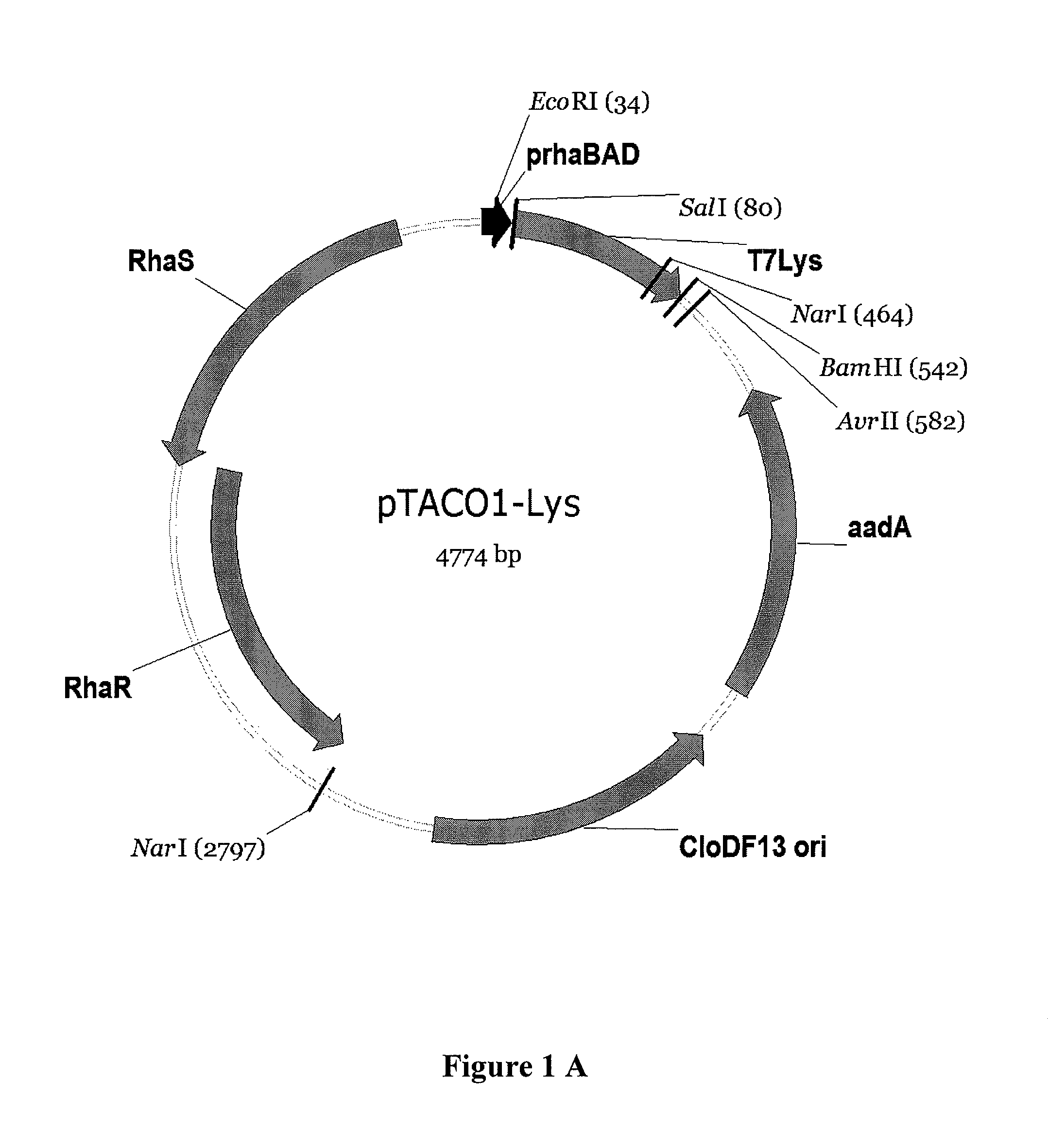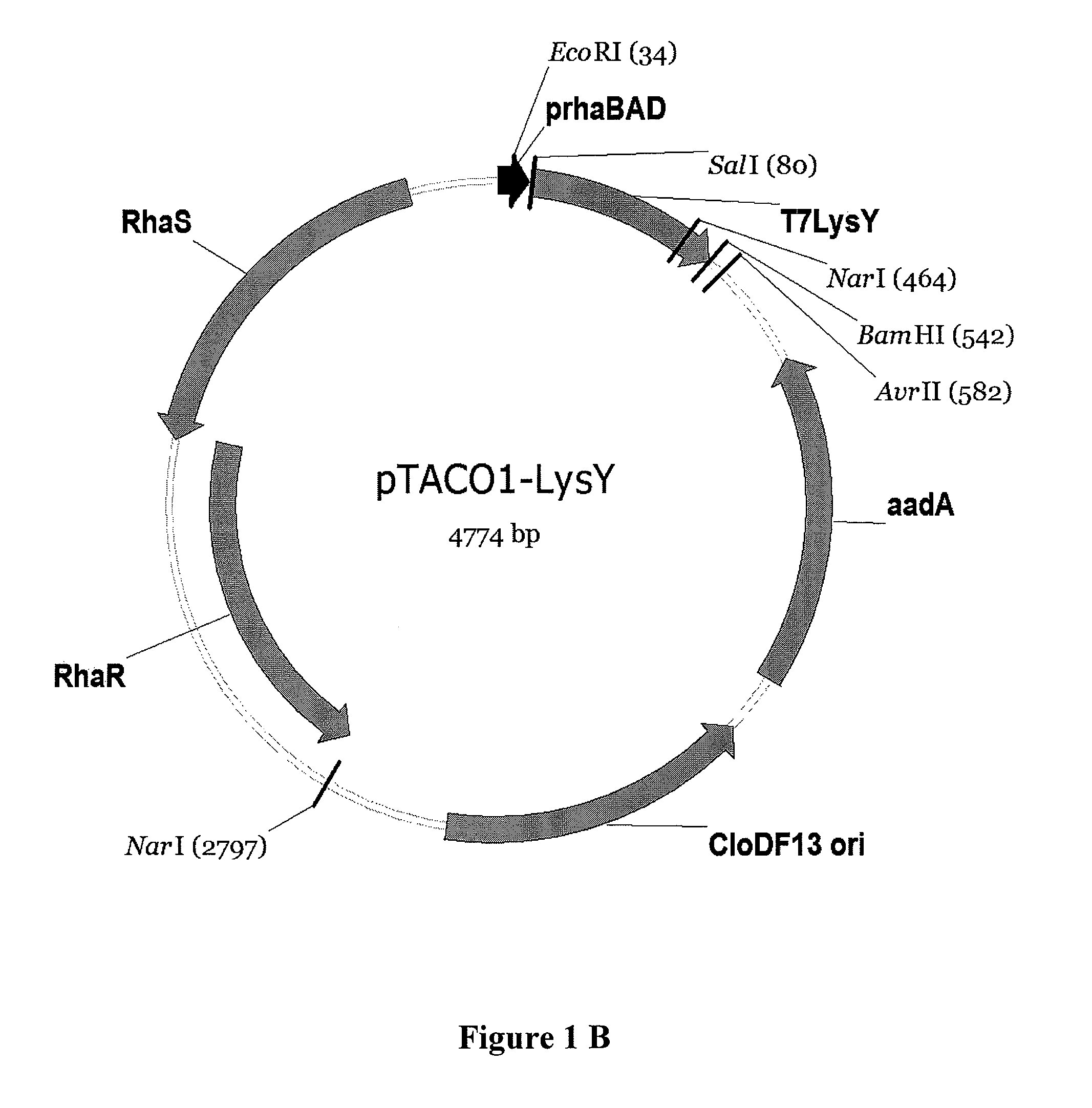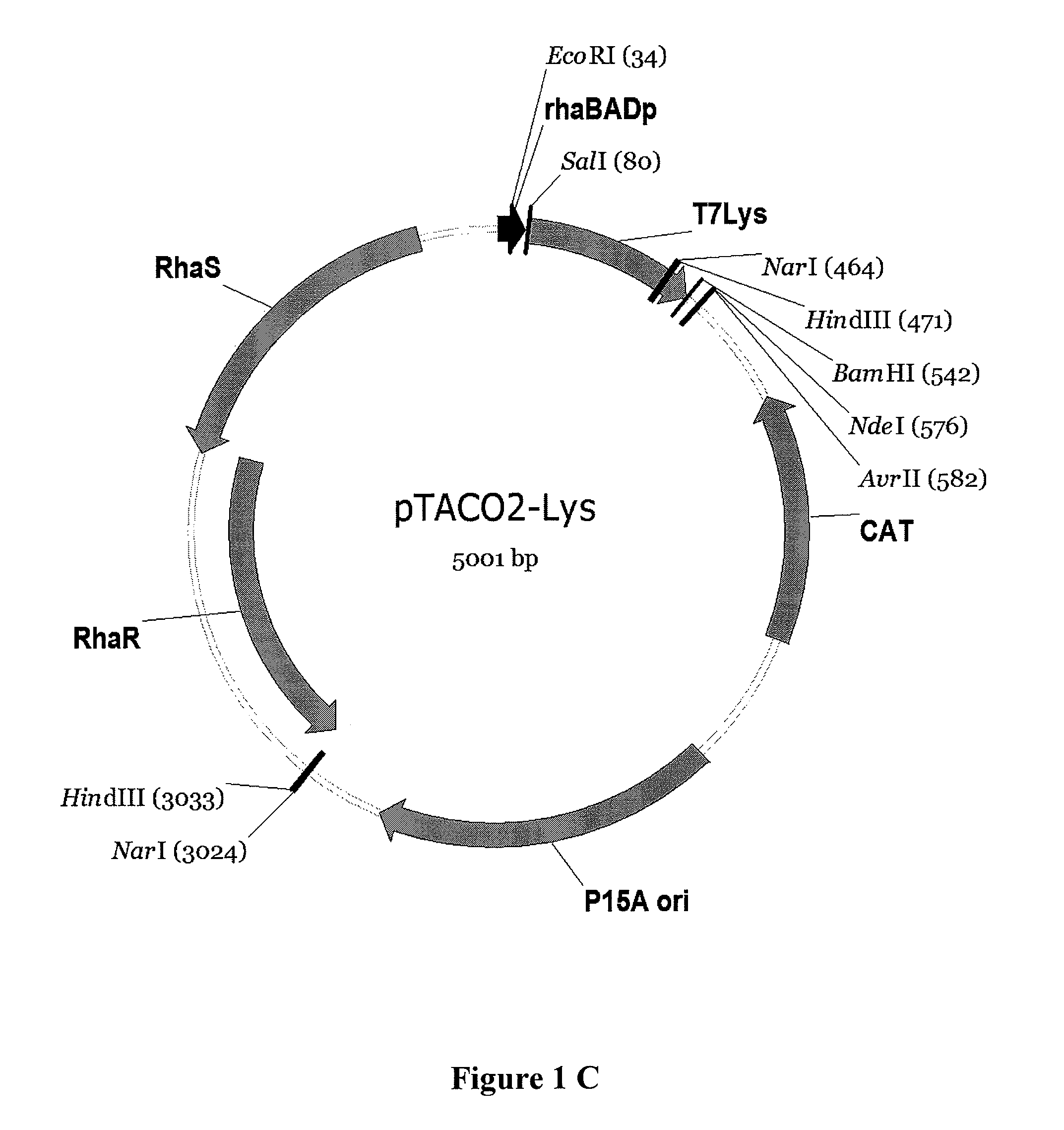Expression system for proteins
a polypeptide and protein technology, applied in foreign genetic material cells, sugar derivatives, enzymes, etc., can solve the problems of difficult overexpression of membrane proteins in i>e. coli /i>e. coli, affecting the expression of polypeptides, and severely reducing yields, so as to reduce undesired aggregation, facilitate host cell couple transcription, and reduce the effect of undesired aggregation
- Summary
- Abstract
- Description
- Claims
- Application Information
AI Technical Summary
Benefits of technology
Problems solved by technology
Method used
Image
Examples
example 1
[0130]Construction of pTACO1 and pTACO2: A portion of pRhal09 (Giacalone, et al. (2006) Biotechniques 40:355-64) containing the genes rhaS, rhaR, the promoter rhaBAD and the multiple cloning site was PCR amplified using primers ‘pRha_EheI_f, GCGCGCGGCGCCCGATAAGCTTAATTAATCTTTCTGCG’ (SEQ ID NO: 7) and ‘pRha_XmaJI_r, CGCGCGCCTAGGGCATATGAATACGCCCTTTCGGATG’ (SEQ ID NO: 8). The PCR product was run on an 1% agarose gel and purified using Qiaex II from Qiagen. The purified PCR product was digested with Ehel and XmaJI and ligated into the backbone of pACYC-DUET-1 and pCDF-DUET-1, respectively, (Novagene) (Tolia and Joshua-Tor (2006) Nat Methods 3:55-64) digested with Ehel and XmaJI. The XbaI restriction site within the p15A origin of pACYC-DUET-1 was eliminated by Quikchange site directed mutagenesis (TCTAGA to TCTAGG) following the instructions of the manufacturer (Stratagene). The plasmid resulting from ligation of the said PCR product with pCDF-DUET-1 was named pTACO1, the plasmid resulti...
example 2
[0131]Construction of pTACO1-Lys, pTACO1-LysY, pTACO2-Lys, and pLEMO pTACO1-Lys, pTACO1-LysY, pTACO2-Lys, and pLemo were constructed by ligating the PCR-amplified product of T7 Lysozyme or the T7 Lysozyme mutant K128Y (Cheng, et al. (1994) Proc Natl Acad Sci U S A 91:4034-8) (LysY) into pTACO1 and pTACO2, respectively, digested with Sall and BamHI. PCR primers used were ‘T7Lys_SalI_f, GCGCGCGTCGACATGGCTCGTGTACAGTTTAA’ (SEQ ID NO: 9) and ‘T7Lys_BamHI_r, CGCGCGGGATCCTTATCCACGGTCAGAAGTGA’ (SEQ ID NO: 10).
example 3
Construction of pTACO3-LysY
[0132]A portion of pCL1920 (Lerner and Inouye (1990) Nucleic Acids Res 18:4631) containing the gene aadA1 and the pSC101 origin of replication repA was PCR amplified using primers ‘pCL1920_XmaJI_f, CGCGCGCCTAGGGACAGTAAGACGGGTAAGCC’ (SEQ ID NO: 11) and ‘pCL1920_HindIII_r, GCGCGCAAGCTTCTAACGCTTGAGTTAAGCCG’ (SEQ ID NO: 12). The purified PCR product was digested and cloned into the fragment of pTACO1-LysY digested with HindIII and XmaJI that contained the genes rhaS, rhaR, the promoter rhaBAD and the gene LysY. The resulting plasmid was called pTACO3-LysY.
[0133]The nucleotide sequences of the plasmids were confirmed by sequencing (BM Labbet A B, Furusund, Sweden).
PUM
| Property | Measurement | Unit |
|---|---|---|
| temperature | aaaaa | aaaaa |
| pH | aaaaa | aaaaa |
| pH | aaaaa | aaaaa |
Abstract
Description
Claims
Application Information
 Login to View More
Login to View More - R&D
- Intellectual Property
- Life Sciences
- Materials
- Tech Scout
- Unparalleled Data Quality
- Higher Quality Content
- 60% Fewer Hallucinations
Browse by: Latest US Patents, China's latest patents, Technical Efficacy Thesaurus, Application Domain, Technology Topic, Popular Technical Reports.
© 2025 PatSnap. All rights reserved.Legal|Privacy policy|Modern Slavery Act Transparency Statement|Sitemap|About US| Contact US: help@patsnap.com



